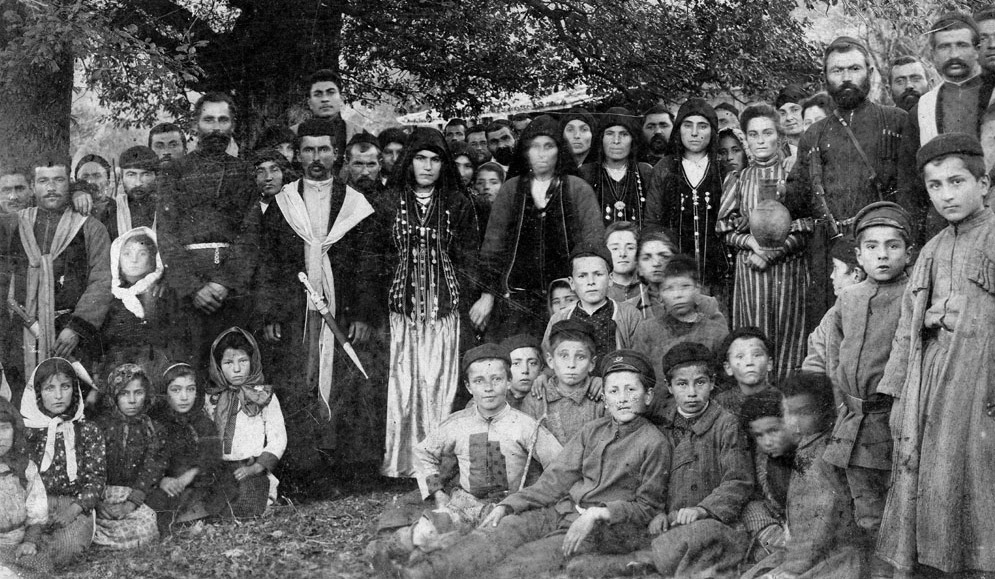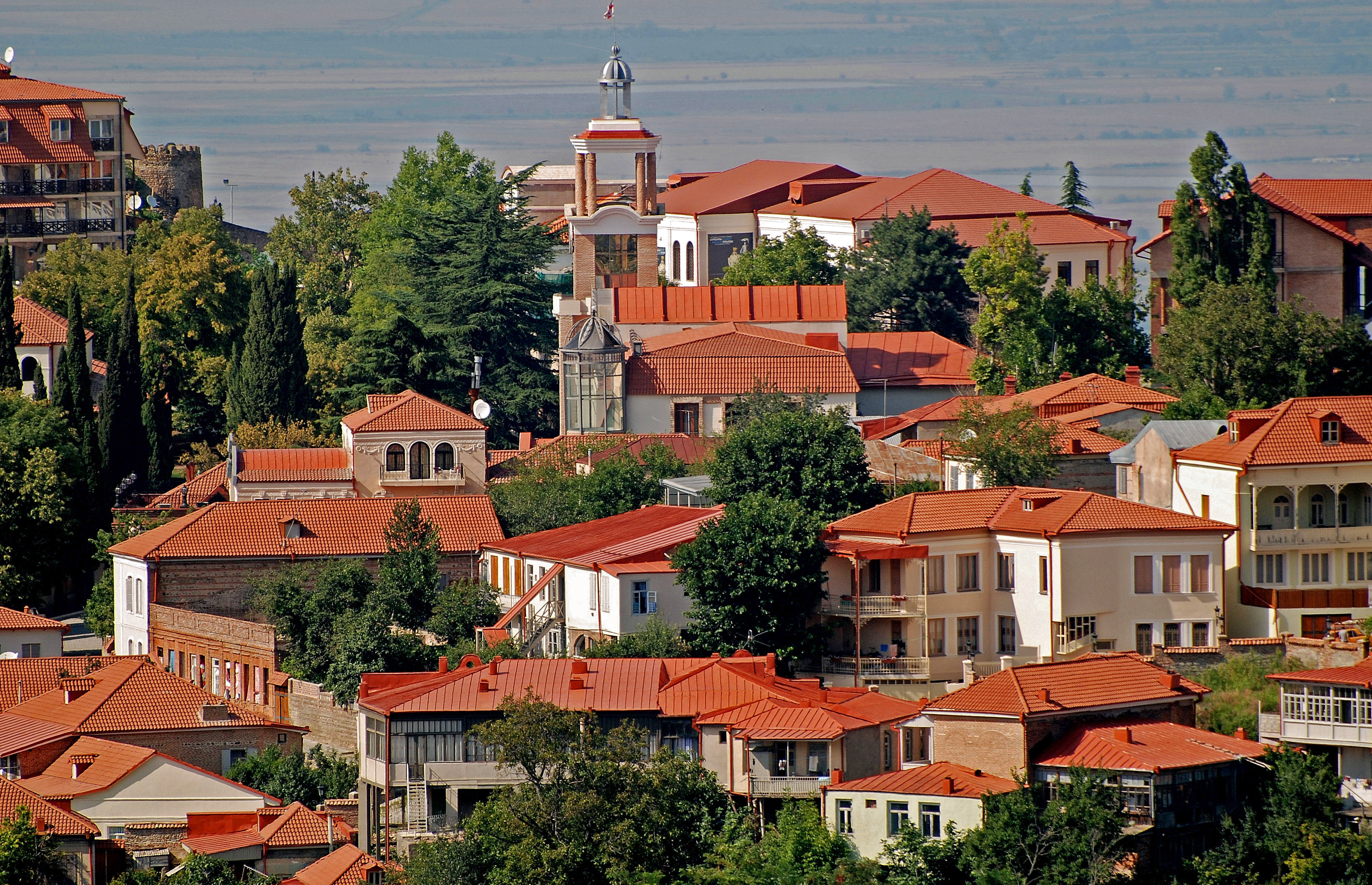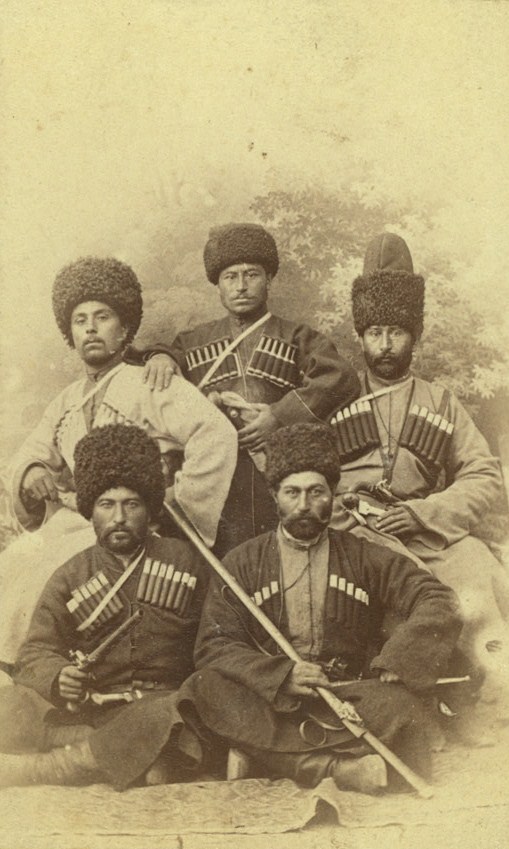|
Tusheti
Tusheti ( ka, ßāŚßāŻßā©ßāößāŚßāś) is a historic region in northeast Georgia. Geography Located on the northern slopes of the Greater Caucasus Mountains, Tusheti is bordered by the Russian republics of Chechnya and Dagestan to the north and east, respectively; and by the Georgian historic provinces Kakheti and Pshav-Khevsureti to the south and west, respectively. The population of the area is mainly ethnic Georgians called Tushs or Tushetians ( ka, tushebi). Historically, Tusheti comprised four mountain communities: the Tsova (living in the Tsova Gorge), the Gometsari (living along the banks of the Tushetis Alazani River), the Pirikiti (living along the banks of the Pirikitis Alazani River) and the Chaghma, living close to the confluence of the two rivers). Administratively speaking, Tusheti is now part of the '' raioni'' of Akhmeta, itself part of Georgia's eastern region of Kakheti. The largest village in Tusheti is Omalo. History The area is thought to have long been ... [...More Info...] [...Related Items...] OR: [Wikipedia] [Google] [Baidu] |
Tushetians
The Tushetians , or Tush , are a subgroup of Georgians who mainly live in Tusheti. Tsova Tushetians speak the Tsova Tushetian language and Chagma Tushetians speak the Chagma Tushetian dialect of Georgian. Subgroups The Tush divide themselves into two groups, the Chagma-Tush, who speak the local Georgian dialect and the Tsova-Tush, also known as Bats or Batsbi, who speak the Bats language, a Nakh language. Most Bats also speak Georgian, to which there is a continuing trend of linguistic assimilation. Despite differences in language and culture (to a degree), both Chagma- and Tsova-Tush consider themselves to be part of the larger group of Tush, which in turn is considered a subgroup of Georgians. Appearance Anthropologically Tushetians have an Eastern Georgian type of face, with light colored eyes and hair color ranging from blonde to brown. Culture Traditionally, the Tushs are sheep herders. Tushetian Guda cheese (Not to be confused with European Gouda cheese, with which it sha ... [...More Info...] [...Related Items...] OR: [Wikipedia] [Google] [Baidu] |
Bats People
The Bats people ( ka, ßāæßāÉßā¬ßāś, tr) or the Batsbi (ßāæßāÉßā¬ßāæßāś), are Nakh-speaking Tushetians in the country of Georgia. They are also known as the TsŌĆÖova-Tush (ßā¼ßāØßāĢßāÉßāŚßāŻßā©ßāößāæßāś) after the TsŌĆÖova Gorge in the historic Georgian mountain region of Tusheti. The group should not be confused with the neighbouring Kists ŌĆō also a Nakh-speaking people who live in the nearby Pankisi Gorge. Language and customs Part of the community still retains its own Bats language ("batsbur mott"), which has adopted many Georgian loan-words and grammatical rules and is mutually unintelligible with the two other Nakh languages, Chechen and Ingush. As Professor Johanna Nichols put it, " he Batsburlanguage is related to Chechen and Ingush roughly as Czech is related to Russian nd the Batsbinot belong to vai naakh nor their language to vai mott, though any speaker of Chechen or Ingush can immediately tell that the language is closely related and can understand some phrases of ... [...More Info...] [...Related Items...] OR: [Wikipedia] [Google] [Baidu] |
Bats Language
Bats (also Batsi, Batsbi, Batsb, Batsaw, Tsova-Tush) is the endangered language of the Bats people, a North Caucasian minority group and is part of the Nakh family of Northeast Caucasian languages. It had 2,500 to 3,000 speakers in 1975. There is only one dialect. It exists only as a spoken language, as Bats people use Georgian as their written language. The language is not mutually intelligible with either Chechen or Ingush, the other two members of the Nakh family. History Tusheti, the northeastern mountainous region of Georgia, is home to four tribes that consider themselves Tushetians: the Batsbi - also known as Tsovatush; the Gometsari; the Piriqiti; and the Chagma-Tush. Tsovatush people make up 50% of Tushetians. As of today only several hundred Tsovatush people speak ''Batsbur Mott ŌĆō (Bats language), whereas the other tribes (Gometsari, Piriqiti and Chagma-Tush) have lost the language. Evidence from toponymics indicates that the other three Tushetian tribes formerly ... [...More Info...] [...Related Items...] OR: [Wikipedia] [Google] [Baidu] |
Omalo
Omalo ( ka, ßāØßāøßāÉßāÜßāØ) is a principal village in the historical region of Tusheti, Georgia. Administratively, it is part of the Akhmeta District in Kakheti. It lies between the Greater Caucasus Mountain Range and the Pirikita Range of Tusheti. Due to Omalo's high mountain location on the northern slopes of the Greater Caucasus Mountain Range and the absence of well-maintained roads, it is largely isolated from the rest of Georgia for most of the year. The only access road is through the Abano pass at 2,850 metres (9,350 ft) The fortress of Keselo is a landmark in Zemo (upper) Omalo, this place served as a refuge for locals in wartime. See also * Kakheti Kakheti ( ka, ßāÖßāÉßā«ßāößāŚßāś ''KŌĆÖakheti''; ) is a region ( mkhare) formed in the 1990s in eastern Georgia from the historical province of Kakheti and the small, mountainous province of Tusheti. Telavi is its capital. The region comprises e ... * Keselo * Omalo Ethnographic Museum References External l ... [...More Info...] [...Related Items...] OR: [Wikipedia] [Google] [Baidu] |
Georgian People
The Georgians, or Kartvelians (; ka, ßāźßāÉßāĀßāŚßāĢßāößāÜßāößāæßāś, tr, ), are a nation and indigenous Caucasian ethnic group native to Georgia and the South Caucasus. Georgian diaspora communities are also present throughout Russia, Turkey, Greece, Iran, Ukraine, United States, and European Union. Georgians arose from Colchian and Iberian civilizations of classical antiquity; Colchis was interconnected with the Hellenic world, whereas Iberia was influenced by the Achaemenid Empire until Alexander the Great conquered it. In the 4th century, the Georgians became one of the first to embrace Christianity and now the majority of Georgians are Orthodox Christians, with most following their national autocephalous Georgian Orthodox Church, although there are small Georgian Catholic and Muslim communities as well as a significant number of irreligious Georgians. Located in the Caucasus, on the continental crossroads of Europe and Asia, the High Middle Ages saw Georgian people f ... [...More Info...] [...Related Items...] OR: [Wikipedia] [Google] [Baidu] |
Kakheti
Kakheti ( ka, ßāÖßāÉßā«ßāößāŚßāś ''KŌĆÖakheti''; ) is a region ( mkhare) formed in the 1990s in eastern Georgia from the historical province of Kakheti and the small, mountainous province of Tusheti. Telavi is its capital. The region comprises eight administrative districts: Telavi, Gurjaani, Qvareli, Sagarejo, Dedoplistsqaro, Signagi, Lagodekhi and Akhmeta. Kakheti is bordered by the Russian Federation with the adjacent subdivisions ( Chechnya to the north, and Dagestan to the northeast), the country of Azerbaijan to the southeast, and with the regions of Mtskheta-Mtianeti and Kvemo Kartli to the west. Kakheti has a strong linguistic and cultural identity, since its ethnographic subgroup of Kakhetians speak the Kakhetian dialect of Georgian. The Georgian David Gareja monastery complex is partially located in this province and is subject to a border dispute between Georgian and Azerbaijani authorities. Popular tourist attractions in Kakheti include Tusheti, Gremi ... [...More Info...] [...Related Items...] OR: [Wikipedia] [Google] [Baidu] |
Nakh Peoples
The Nakh peoples, also known as ''Vainakh peoples'' (Chechen/Ingush: , apparently derived from Chechen , Ingush "our people"; also Chechen-Ingush), are a group of Caucasian peoples identified by their use of the Nakh languages and other cultural similarities. These are chiefly the ethnic Chechen (including the Chechen sub-ethnos, the Kists, in Georgia), Ingush and Bats peoples of the North Caucasus, including closely related minor or historical groups. The ethnonym "Nakhchi" Nakh peoples and Vainakh peoples are two terms that were coined by Soviet ethnographers such as the Ingush ethnographer Zaurbek Malsagov. The reasoning behind the creation of these terms was to unite the closely related nations of Chechen and Ingush into one term. The terms "Vainakh" (our people) and "Nakh" (people) were first used as a term to unite two peoples in 1928. It was subsequently popularized by other Soviet authors, poets, and historians such as Mamakaev and Volkova in their research. Accordin ... [...More Info...] [...Related Items...] OR: [Wikipedia] [Google] [Baidu] |
Dartlo (2)
Dartlo ( ka, ßāōßāÉßāĀßāŚßāÜßāØ) is a village in the Akhmeta Municipality, Kakheti Region, Georgia. The village is known for its historic stone towers and houses, and the Dartlo church. Dartlo is part of the historical region of Tusheti and is located about 12km from Omalo Omalo ( ka, ßāØßāøßāÉßāÜßāØ) is a principal village in the historical region of Tusheti, Georgia. Administratively, it is part of the Akhmeta District in Kakheti. It lies between the Greater Caucasus Mountain Range and the Pirikita Range of Tushe ..., the main village of the region. Population As of the 2014 national census, Dartlo had 0 permanent residents, down from 9 in 2002. Gallery File:Watch towers.jpg, Tower houses in Dartlo File:Tower, Tusheti, Geo.jpg, A tower in Dartlo File:Dartlo.jpg, View of the village File:Tusheti (7).jpg, Distant view File:Dartlo-2400.jpg, Dartlo in 1892 References {{Reflist Populated places in Kakheti ... [...More Info...] [...Related Items...] OR: [Wikipedia] [Google] [Baidu] |
Pkhovi
Pkhovi ( ka, ßāżßā«ßāØßāĢßāś), also known as Pkhoet'i (ßāżßā«ßāØßāößāŚßāś), is a medieval term for the mountainous district in northeast Georgia comprising the latter-day provinces of Pshavi and Khevsureti along the upper reaches of the Aragvi, and in three alpine valleys just north of the main crest of the Greater Caucasus. Today it is territory of Dusheti Municipality, Mtskheta-Mtianeti region. History Inhabitants of Pkhovi ŌĆō the Pkhovians (ßāżßā«ßāØ āĢāößāÜßā£ßāś, ''Pkho lni'') ŌĆō were a tribe of Georgian highlanders known for their warlike character and frequent disobedience to the royal authority. The toponym Pkhovi, which may derive from a Georgian root meaning "brave, valiant", is first attested in a passage from the seventh-century chronicle '' The Conversion of Kartli'' which refers to the defiance of local highlanders to Christianizing efforts of the king Mirian III, and St. Nino, a 4th-century apostle of eastern Georgia (Kartli/Iberia). These pressures ar ... [...More Info...] [...Related Items...] OR: [Wikipedia] [Google] [Baidu] |
Georgia (country)
Georgia (, ; ) is a transcontinental country at the intersection of Eastern Europe and Western Asia. It is part of the Caucasus region, bounded by the Black Sea to the west, by Russia to the north and northeast, by Turkey to the southwest, by Armenia to the south, and by Azerbaijan to the southeast. The country covers an area of , and has a population of 3.7 million people. Tbilisi is its capital as well as its largest city, home to roughly a third of the Georgian population. During the classical era, several independent kingdoms became established in what is now Georgia, such as Colchis and Iberia. In the early 4th century, ethnic Georgians officially adopted Christianity, which contributed to the spiritual and political unification of the early Georgian states. In the Middle Ages, the unified Kingdom of Georgia emerged and reached its Golden Age during the reign of King David IV and Queen Tamar in the 12th and early 13th centuries. Thereafter, the ... [...More Info...] [...Related Items...] OR: [Wikipedia] [Google] [Baidu] |
Erebuni, Armenia
Erebuni ( hy, įĘųĆšźšóšĖųéšČš½ šŠšĪųĆš╣šĪš»šĪšČ šĘųĆš╗šĪšČ, ''Erebuni var─Źakan ┼Īr─Ąan''), is one of the 12 districts of Yerevan, the capital of Armenia. It is situated southeast of the city centre where Erebuni Fortress is located. The name of Yerevan itself is derived from ancient ''Erebuni''. Erebuni is bordered by Shengavit District from the west, Kentron, Nork-Marash and Nor Nork districts from the north, Kotayk Province from the east, Nubarashen district and Kotayk Province from the south. Overview Erebuni has an area of 48 km┬▓ (21.52% of Yerevan city area), out of which 29 km┬▓ are occupied by residential or commercial buildings. Erebuni is the largest district of Yerevan in terms of area. The district is unofficially divided into smaller neighborhoods such as Erebuni neighbourhood, Nor Aresh, Saritagh, Vardashen, Mushavan, Verin Jrashen and Nor Butania. Sasuntsi Davit Square along with the metro station form the core of the district. The main streets of ... [...More Info...] [...Related Items...] OR: [Wikipedia] [Google] [Baidu] |
Elista
Elista (russian: ąŁą╗ąĖčüčéą░╠ü, (common during the Soviet era) or (most common pronunciation used after 1992 and in Kalmykia itself);"ąæąŠą╗čīčłąŠą╣ 菹ĮčåąĖą║ą╗ąŠą┐ąĄą┤ąĖč湥čüą║ąĖą╣ čüą╗ąŠą▓ą░čĆčī", ą┐ąŠą┤ čĆąĄą┤. ąÉ. ą£. ą¤čĆąŠčģąŠčĆąŠą▓ą░. ą£ąŠčüą║ą▓ą░ ąĖ ąĪą░ąĮą║čé-ą¤ąĄč鹥čĆą▒čāčĆą│, 1997, čüčéčĆ. 1402 , ''Elst'', )The approximate pronunciation of the Cyrillic Kalmyk name in IPA is łe╔«st╩░ The name in Oirat clear script is or , ''├Ŗl├¬s├╝t├╝'' is the capital city of the Republic of Kalmykia, Russia">he official la ..., Russia. It was known as Stepnoy (ąĪč鹥ą┐ąĮąŠ╠üą╣) from 1944 to 1957. Geography The city is located in the area of the Yergeni hills, in the upper part of the Elista (river), Elista valley. The sources of the river are located in the western part of the city. The Elista crosses the urban area from west to east, dividing it into two sections, a larger northern part and a smaller southern one. Google Earth History Elista was founded in 1865 as a ... [...More Info...] [...Related Items...] OR: [Wikipedia] [Google] [Baidu] |
.jpg)
.jpg)

.jpg)

